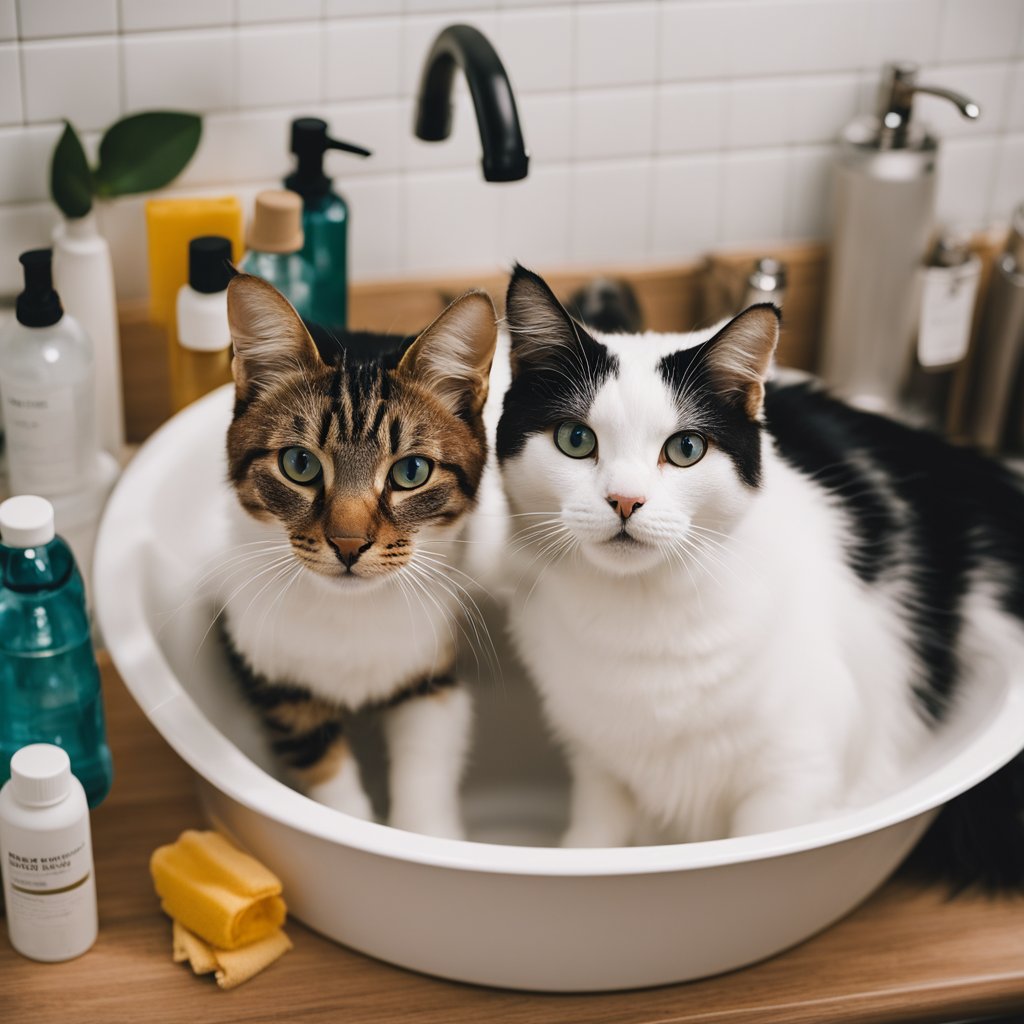Do Indoor Cats Need Baths? Exploring the Benefits and Risks
If you’re a cat owner, you’re probably familiar with the grooming habits of your feline friend. Cats are known for being fastidious groomers, spending hours each day licking their fur to keep it clean and free of tangles. But despite their grooming habits, you may be wondering if your indoor cat needs a bath. In this article, we’ll explore the topic of bathing indoor cats to help you determine if it’s necessary for your furry companion.

Understanding Cat Grooming Habits Before we dive into the topic of bathing your indoor cat, it’s important to understand their grooming habits. Cats are self-grooming animals and have a natural ability to keep themselves clean. They use their rough tongues to remove dirt and debris from their fur, and their saliva contains enzymes that help to break down oils and remove odors. Additionally, cats are able to spread their natural oils throughout their fur to help keep it soft and shiny.
Bathing Indoor Cats While cats are able to keep themselves clean, there are some situations where you may need to give your indoor cat a bath. For example, if your cat gets into something sticky or smelly, a bath may be necessary to remove the substance. Additionally, if your cat has a skin condition or is unable to groom themselves due to age or illness, a bath may be necessary to help keep them clean and comfortable.
Key Takeaways
- Cats are able to keep themselves clean through their natural grooming habits.
- Bathing an indoor cat is not usually necessary, but there are situations where it may be required.
- If you do need to bathe your indoor cat, be sure to use a cat-specific shampoo and avoid getting water in their ears.
Understanding Cat Grooming Habits
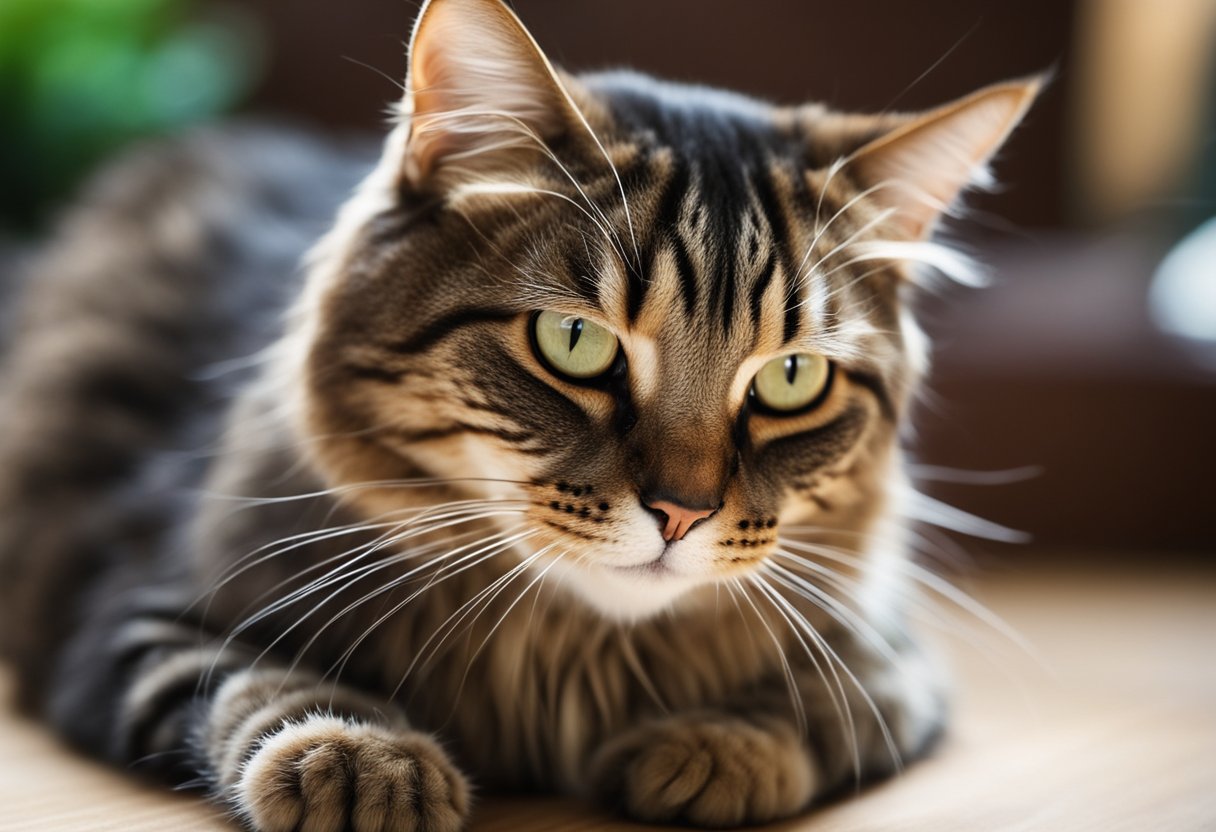
Cats are well-known for their fastidious grooming habits. They spend a significant amount of time each day licking and grooming themselves, which helps to keep their fur clean, remove loose hair, and distribute natural oils throughout their coat. However, there are some factors that can affect a cat’s grooming needs, and it’s important to understand these factors in order to determine whether your indoor cat needs a bath.
Natural Self-Cleaning Process
Cats are equipped with a unique self-cleaning system that involves their tongue and saliva. The rough texture of a cat’s tongue helps to remove dirt, debris, and loose hair from their coat. When a cat licks their fur, they also spread saliva over their coat, which acts as a natural conditioner and helps to distribute natural oils that keep their fur healthy and shiny.
In addition to grooming their fur, cats also spend time cleaning other parts of their body, such as their paws and face. Cats use their paws to clean their face, and they also use their tongue to clean their paws. This helps to remove any dirt or debris that may have accumulated on their paws or face.
Factors Affecting Grooming Needs
While cats are generally very good at keeping themselves clean, there are some factors that can affect their grooming needs. For example, cats with long hair may require more grooming than cats with short hair. Long-haired cats are more prone to matting and tangling, which can be uncomfortable and even painful for the cat.
Another factor that can affect a cat’s grooming needs is their age. Older cats may have difficulty grooming themselves due to arthritis or other health issues. They may also be less active, which can lead to a less effective self-cleaning process.
Finally, cats that have certain health conditions may require more frequent grooming. For example, cats with skin allergies may benefit from regular baths to help soothe their skin and remove allergens.
Overall, while indoor cats generally do not need baths, it’s important to understand your cat’s grooming needs in order to keep them healthy and comfortable. By providing your cat with regular grooming, you can help keep their coat shiny and healthy, and prevent any discomfort or health issues that may arise from poor grooming habits.
Bathing Indoor Cats
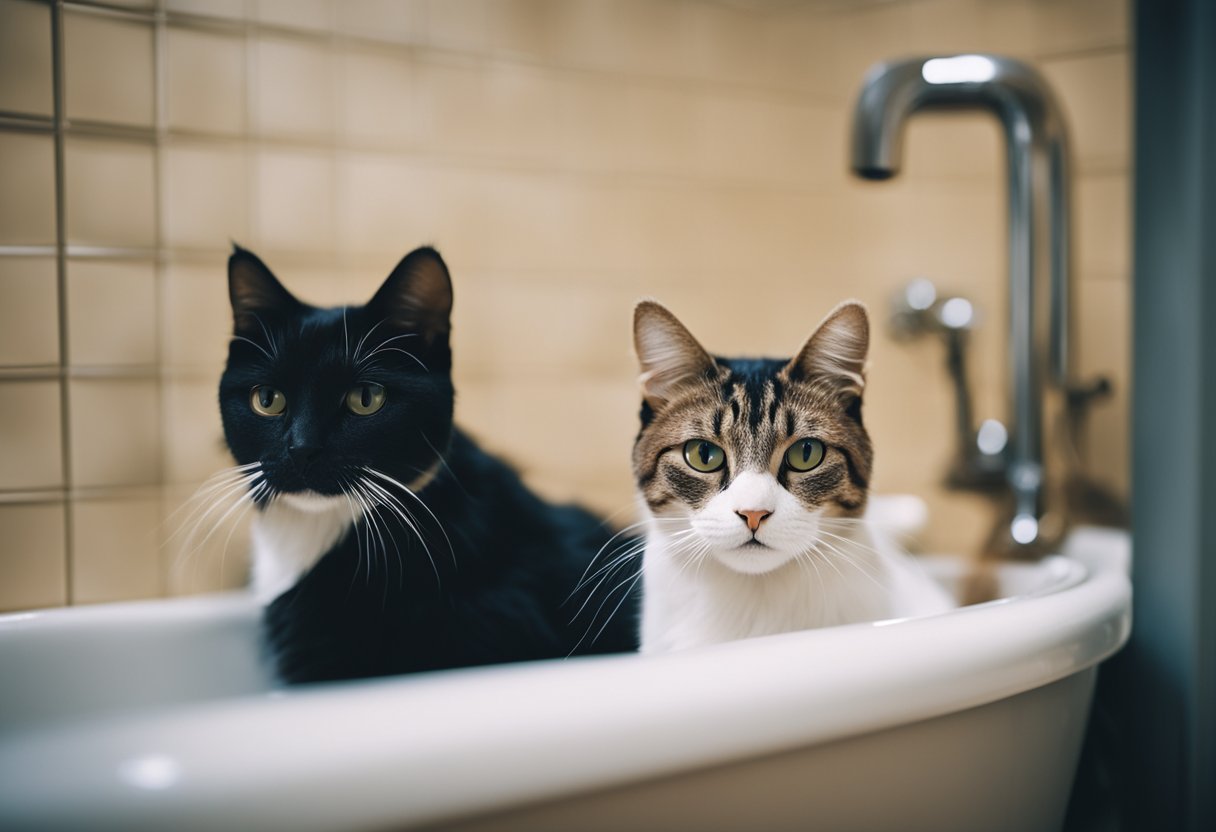
As an indoor cat owner, you may wonder whether your feline friend needs a bath. The answer is not straightforward, as it depends on many factors, including the cat’s breed, age, and health condition. However, in general, indoor cats do not need frequent baths, as they are fastidious groomers and can keep themselves clean and healthy.
When to Bathe Your Cat
There are some situations when you may need to bathe your indoor cat, such as when they get into something dirty or smelly, or when they have a skin condition that requires medical treatment. However, you should avoid bathing your cat too often, as it can strip their skin of natural oils and cause dryness and irritation.
How to Safely Bathe a Cat
If you need to bathe your indoor cat, it’s essential to do it safely and comfortably for both you and your feline friend. Here are some tips to help you:
- Use lukewarm water and a cat-friendly shampoo to avoid irritation and discomfort.
- Fill the sink or bathtub with a few inches of water, and use a cup or spray nozzle to wet your cat’s fur gently.
- Apply the shampoo and massage it into your cat’s fur, avoiding the eyes, ears, and nose.
- Rinse your cat thoroughly with lukewarm water, making sure to remove all the shampoo.
- Wrap your cat in a towel and dry them gently, avoiding rubbing or pulling their fur.
By following these tips, you can keep your indoor cat clean and healthy without causing them stress or discomfort. Remember, if you’re unsure whether your cat needs a bath or how to do it safely, consult with your veterinarian for advice and guidance.
Resources
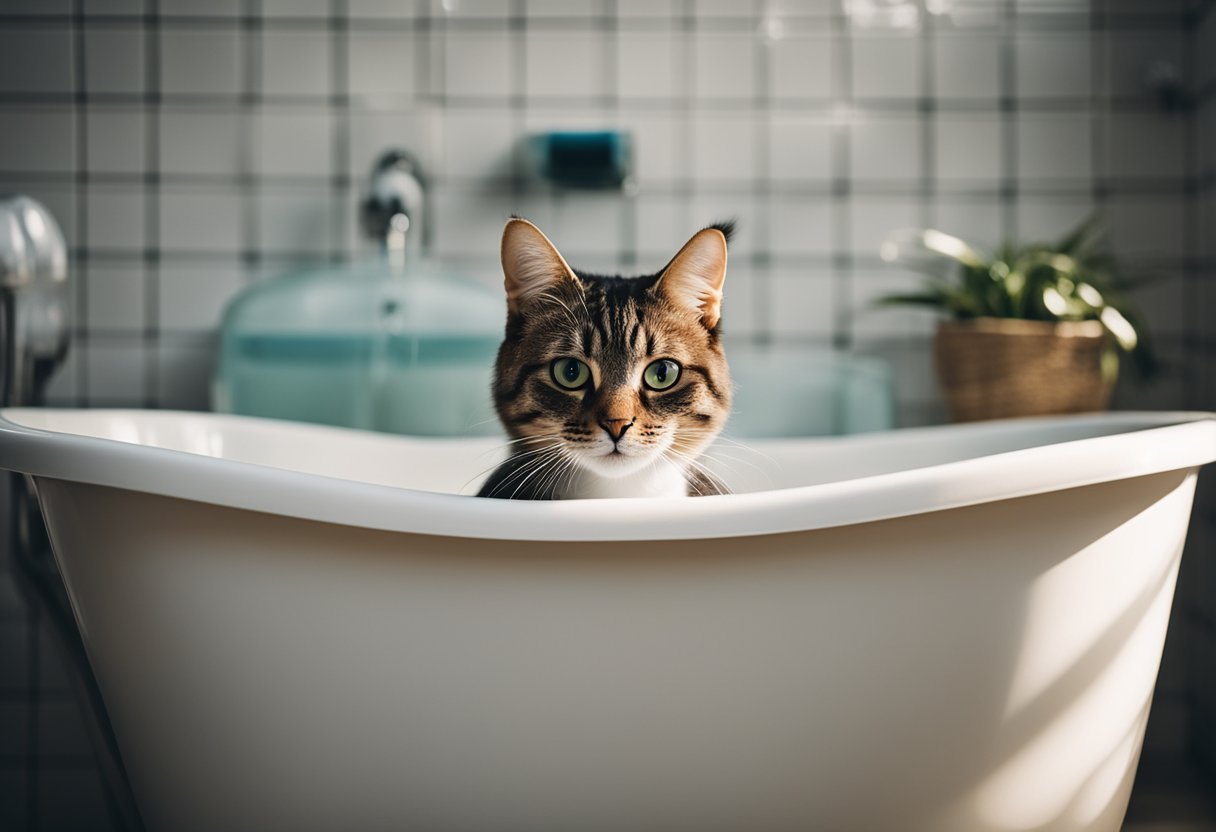
When it comes to bathing indoor cats, it can be a controversial topic among cat owners. Some believe that cats are self-sufficient and do not need bathing, while others believe that regular baths are necessary to maintain their hygiene. In this section, we provide some resources to help you make an informed decision about whether or not to bathe your indoor cat.
Articles
If you’re looking for more information on the topic, there are several articles available online that can help you make an informed decision. One such article is from Vetmed.tamu.edu, which explains that in general, cats do not need to be given a bath by their owners. However, there are certain circumstances when bathing may be necessary, such as when a cat has fleas or other skin parasites.
Another informative article is from Misgatosyyo.com, which explains that regular baths can help remove dirt, dander, and loose hair from your indoor cat’s fur and skin. This can help prevent skin irritation and other health problems.
Supplies
If you do decide to bathe your indoor cat, there are several supplies that you will need. The CCSPCA recommends having cotton balls on hand for ear cleaning, as well as a textured mat to help your cat grip the bottom of the tub. You will also need a mild cat shampoo and a pitcher or handheld showerhead to rinse your cat off.
Tips
Bathing a cat can be a challenging task, but there are several tips that can help make the process easier. One such tip is to use a toy or treat to lure your cat into the bathtub. You can also try filling the front of the tub with a small amount of lukewarm water and leaving the back half of the tub empty, so your cat has a dry place to stand. For more tips on bathing your cat, check out Preventivevet.com.
Conclusion
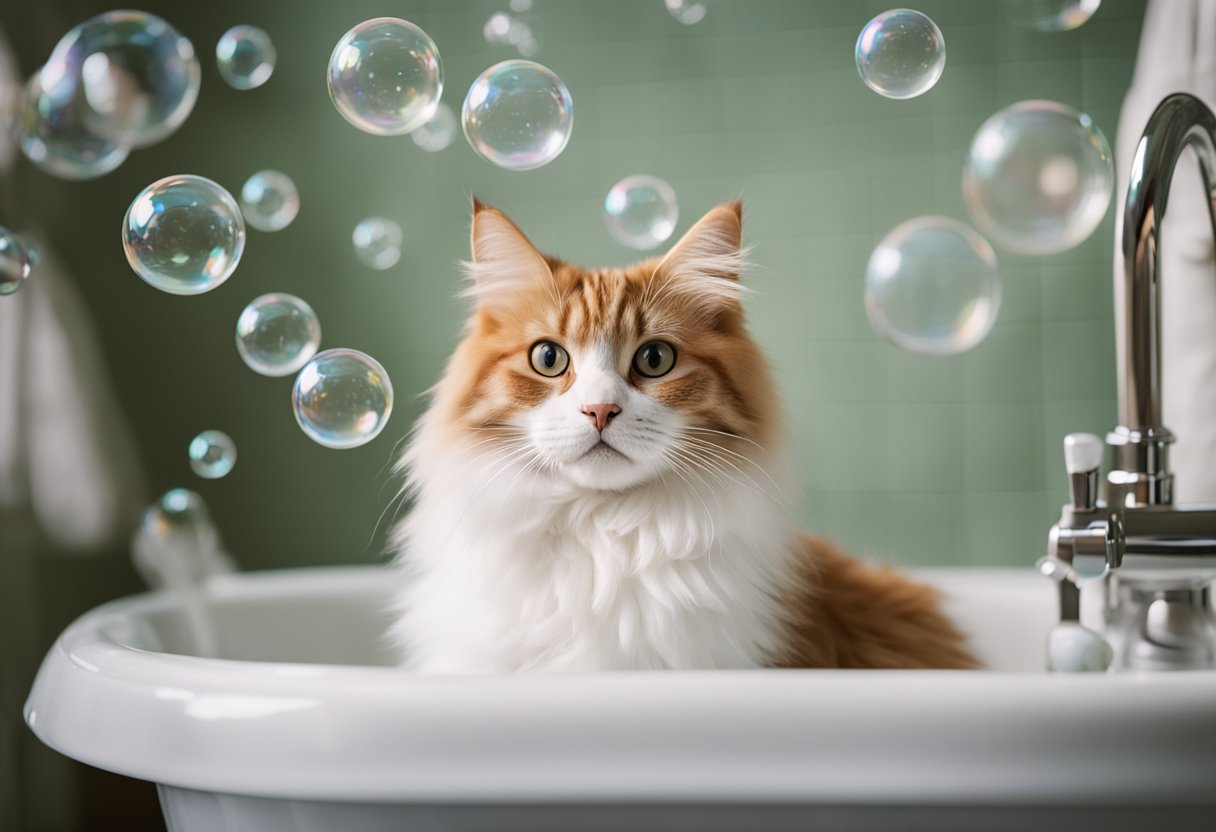
In conclusion, indoor cats do not necessarily need frequent baths. Cats are naturally clean animals and groom themselves regularly. However, there are certain circumstances where a bath may be necessary for their health and wellbeing.
If your cat has a medical condition that affects their skin or coat, your veterinarian may recommend a medicated bath. Additionally, if your cat gets into something particularly dirty or smelly, a bath may be necessary to remove the odor.
It’s important to use a cat-specific shampoo and to avoid getting water in their ears and eyes during the bath. You can also use grooming wipes or sprays to keep your cat clean between baths.
Remember, not all cats enjoy being bathed. If your cat becomes stressed or anxious during the process, it may be best to skip the bath and focus on other grooming methods.
Overall, regular brushing and grooming can help keep your indoor cat clean and healthy. By keeping an eye on your cat’s hygiene needs and working with your veterinarian as necessary, you can help ensure that your feline friend stays happy and comfortable.
Frequently Asked Questions
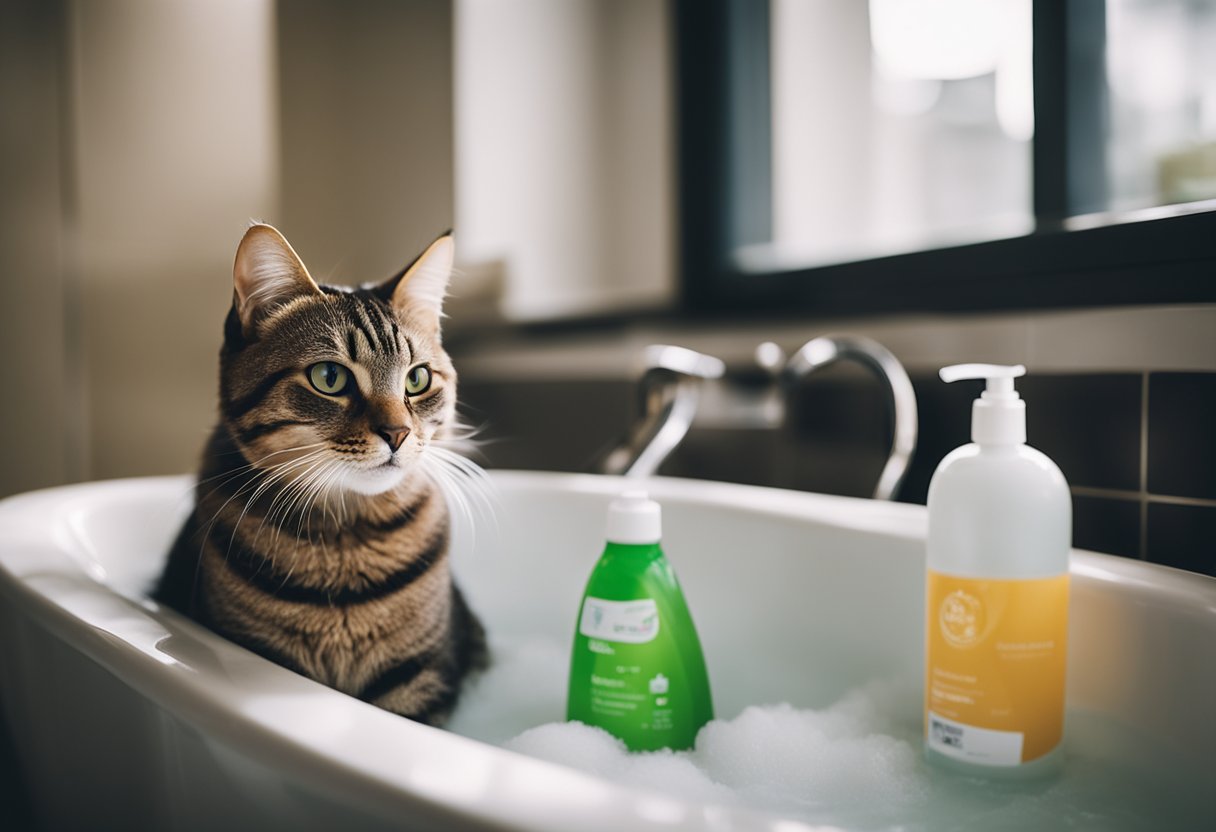
How often should you wash your indoor cat?
Indoor cats generally do not need frequent baths. Most cats are self-groomers and can keep themselves clean. Bathing your cat every 4-6 weeks is usually sufficient to maintain their hygiene. However, if your cat gets into something dirty or smelly, a bath may be necessary.
Is it considered cruel to bathe cats?
No, it is not cruel to bathe cats if it is done correctly. Bathing a cat too often or with the wrong products can strip their skin of natural oils and cause dryness or irritation. However, if done properly, bathing can help keep your cat clean and healthy.
How can you bathe a cat that dislikes water?
Many cats do not like water and may become stressed or agitated during a bath. To make the process more comfortable for your cat, try using a cat-specific shampoo, a non-slip mat in the tub, and lukewarm water. You can also use a washcloth to wet and wash your cat instead of pouring water over them. If your cat is still resistant, consider using a dry shampoo or taking them to a professional groomer.
What are the signs that your cat needs a bath?
If your cat’s fur appears oily, matted, or dirty, it may be time for a bath. Additionally, if your cat has been scratching excessively or has a strong odor, a bath may be necessary. However, it is important to note that cats naturally have an odor, so a mild scent is normal.
Can you bathe your cat every two weeks safely?
Bathing your cat every two weeks is not necessary and may be harmful to their skin. Over-bathing can strip their skin of natural oils and cause dryness or irritation. Unless your cat gets into something particularly dirty or smelly, once a month is usually sufficient.
Is it necessary to bathe house cats, or can they go without?
House cats can usually go without baths as long as they are self-grooming effectively. However, if your cat is prone to matting or has long hair, occasional baths may be necessary to prevent tangles and skin irritations. Additionally, if your cat has a medical condition that affects their ability to groom themselves, they may require more frequent baths.
